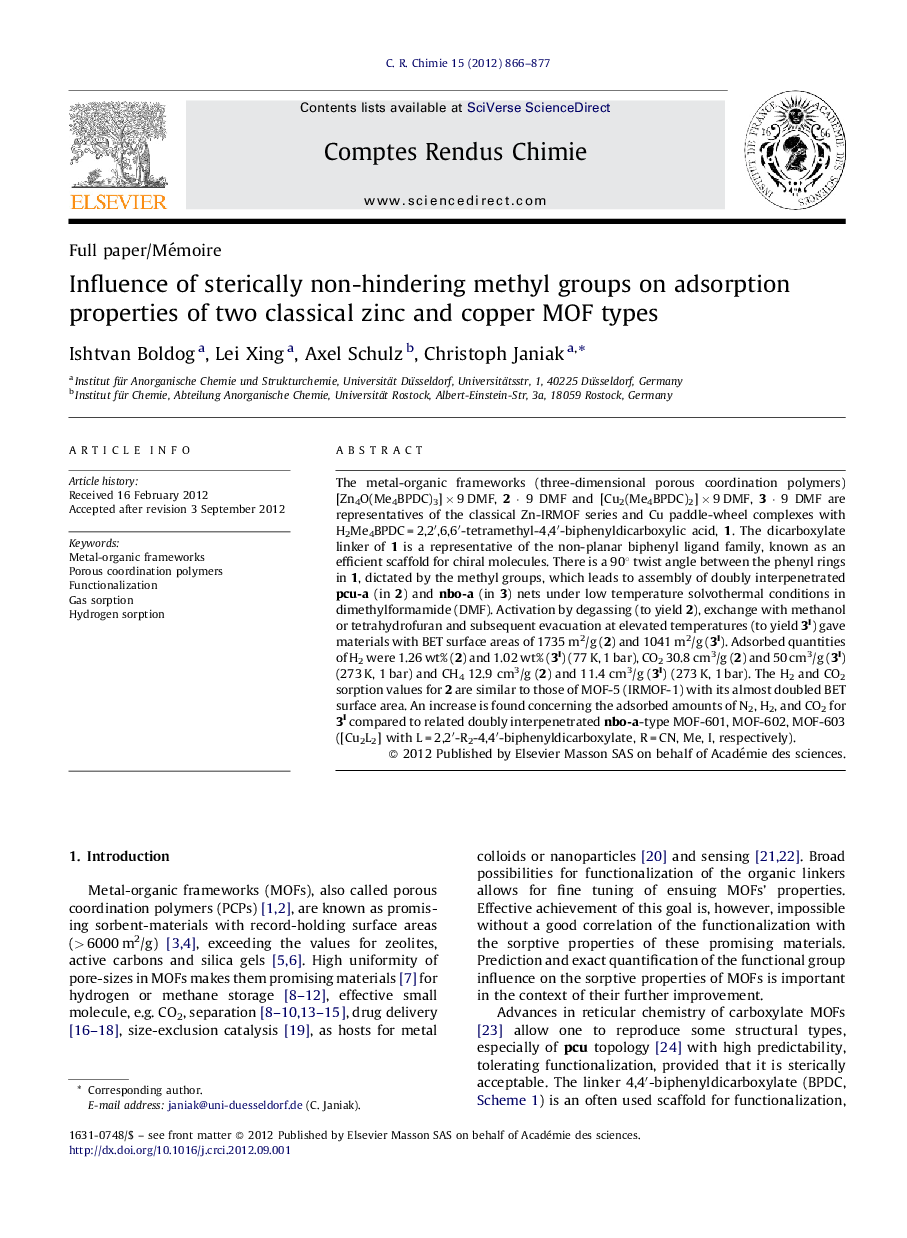| Article ID | Journal | Published Year | Pages | File Type |
|---|---|---|---|---|
| 171019 | Comptes Rendus Chimie | 2012 | 12 Pages |
The metal-organic frameworks (three-dimensional porous coordination polymers) [Zn4O(Me4BPDC)3] × 9 DMF, 2 · 9 DMF and [Cu2(Me4BPDC)2] × 9 DMF, 3 · 9 DMF are representatives of the classical Zn-IRMOF series and Cu paddle-wheel complexes with H2Me4BPDC = 2,2′,6,6′-tetramethyl-4,4′-biphenyldicarboxylic acid, 1. The dicarboxylate linker of 1 is a representative of the non-planar biphenyl ligand family, known as an efficient scaffold for chiral molecules. There is a 90° twist angle between the phenyl rings in 1, dictated by the methyl groups, which leads to assembly of doubly interpenetrated pcu-a (in 2) and nbo-a (in 3) nets under low temperature solvothermal conditions in dimethylformamide (DMF). Activation by degassing (to yield 2), exchange with methanol or tetrahydrofuran and subsequent evacuation at elevated temperatures (to yield 3I) gave materials with BET surface areas of 1735 m2/g (2) and 1041 m2/g (3I). Adsorbed quantities of H2 were 1.26 wt% (2) and 1.02 wt% (3I) (77 K, 1 bar), CO2 30.8 cm3/g (2) and 50 cm3/g (3I) (273 K, 1 bar) and CH4 12.9 cm3/g (2) and 11.4 cm3/g (3I) (273 K, 1 bar). The H2 and CO2 sorption values for 2 are similar to those of MOF-5 (IRMOF-1) with its almost doubled BET surface area. An increase is found concerning the adsorbed amounts of N2, H2, and CO2 for 3I compared to related doubly interpenetrated nbo-a-type MOF-601, MOF-602, MOF-603 ([Cu2L2] with L = 2,2′-R2-4,4′-biphenyldicarboxylate, R = CN, Me, I, respectively).
Graphical abstractFigure optionsDownload full-size imageDownload as PowerPoint slide
